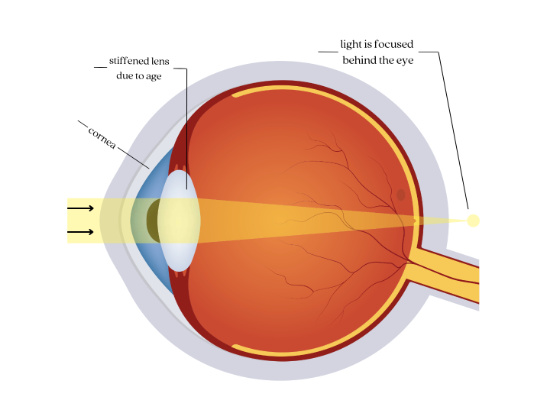

According to some optometrists, over 60% of adults rate the loss of near vision as the first or second most impactful age-related ailment which also includes hearing loss, arthritis, diabetes, high blood pressure, and high cholesterol.
There are over 128 million presbyopes (people with presbyopia) in America. Why does that sound like a crazy number? It’s because the population is growing, life expectancy is increasing, adults are working longer, and with that near vision is becoming increasingly important to us. We know that whatever year it is for us as individuals, we start to notice those unmistakable signs of presbyopia: our inability to see sharp detail and fine print, suffering from headaches and blurry vision. It’s important to know that presbyopia is not an eye disease. It’s a natural part of life; however, left untreated, it affects our performance, our response times, and our quality of life.
Our eyes are amazing and it’s easy to forget that they are organs, working hard to bring objects into focus and send information to the brain. When light enters the eye, it passes through the cornea, pupil (with help from the iris), and through to the lens. In our younger years, the lens is elastic, flexible, and easily changes shape to bend the light rays to the retina, which is at the back of the eye. Ciliary muscles, which help support the lens, change shape and work hard to accommodate close and distant images.
With time, the lens will harden, lose elasticity, and will be unable to bend the light to focus it on the retina. The ciliary muscles will fatigue easier which causes eye strain, blurry vision, and headaches.

Many treatments exist in the ever-advancing world of optometry and ophthalmics. Presbyopes have a variety of modalities to opt for like lens implants, monovision contact lenses, LASIK, conductive keroplasty, and refractive surgery. These treatments can drastically improve quality of life; however, they are expensive, don’t have a guarantee of 100% clear vision, and have an adjustment period that some adults don’t adapt well to. The most widely used method used by adults living with presbyopia is eyeglasses. If your eye health is overall in great shape, readers are the way to go. Otherwise, your optometrist will fit you for bifocals, trifocals, or progressive lenses.
If you are living life and thriving on the other side of 40, what can you do? Presbyopia is inevitable so putting your eye health first is vital to maintaining as much of your vision for as long as possible.